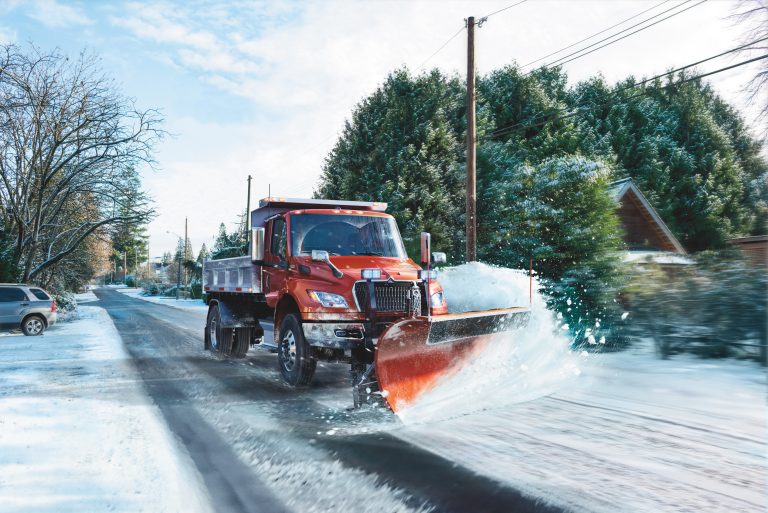
As winter approaches for the nation’s truck and commercial vehicle drivers, so do the safety challenges of winter driving. Snow, sleet, rain, fog, and ice can create perilous driving conditions.
Preparation before the journey and safe practices behind the wheel can help ensure safe travels. Consider these tips before your next journey…
- Inspect your vehicle to minimize breakdowns. Before, during, and after any trip, make sure your truck or fleet is in prime working order to face the winter. Inspect your tires and tire pressure, brakes, lights and signals, wiper blades, and fluid levels. Throughout the year, perform routine maintenance, such as oil, transmission fluid, and coolant changes.
- Know your route, current weather conditions – and alternatives. Before you depart, check the weather forecast along your planned route, especially any expectations for severe conditions, including rain, snow, sleet, and high winds. Be sure to check for road closures before you leave – and during – your journey. Load and launch your preferred travel or weather app to stay atop current conditions throughout your trip to give you time to seek a different route in real time.
- Pack Emergency Supplies. Winter storms in recent years have stranded drivers for days. Some supplies should always be on hand, such as a flashlight, jumper cables, and snow scraper. For winter driving on longer journeys, consider packing extra clothing and a warm blanket, as well as water, some food, work gloves, a shovel, bag of sand or salt, and tire chains.
- Plan for reduced visibility and rough conditions. Winter weather can bring reduced visibility. Turn on your headlights and taillights to increase your visibility and the visibility of others. If snow or water accumulate, or ice is present, consider pulling into the next rest stop, truck stop, or safe exit until conditions improve.
- Know the signs of perilous conditions. Be on the lookout for show drifts, pooling water, even downed trees, branches, or limbs. Can you spot “black ice”? The road surface may appear slightly darker and more dull than surrounding pavement. If present, slow down without hitting the brakes, and seek out paths or areas without ice.
- Slow down and maintain safe distances. Remember the “three-second rule” that called for three seconds of distance between you and the vehicle ahead of you? Double – even triple – it in bad weather. When heavy rain, snow, sleet, fog, icy roads, or high winds are present, decrease your speed and increase your distance. Maintaining safe speed and even more distance between vehicles will increase your reaction time window in case of unexpected events.
Most of all, stay alert to current and changing conditions. Unpredictable wintry weather requires that safety is at your side. Even drivers experienced with treacherous weather can find conditions too dangerous to make or continue the journey.
These tips, and other smart, attentive driving habits, can help prepare for every journey, reduce risks, and help navigate through the harsh winter weather with confidence.
Ascendance Truck Centers provides courtesy inspections for every season, as well as a full line of International products and services to help make winter driving a safer journey. Our wide array of services includes new and used truck sales, a service and parts department for all makes and models, collision repair, full-service leasing, commercial truck rental, and contract maintenance. Find your local Ascendance branch today.





